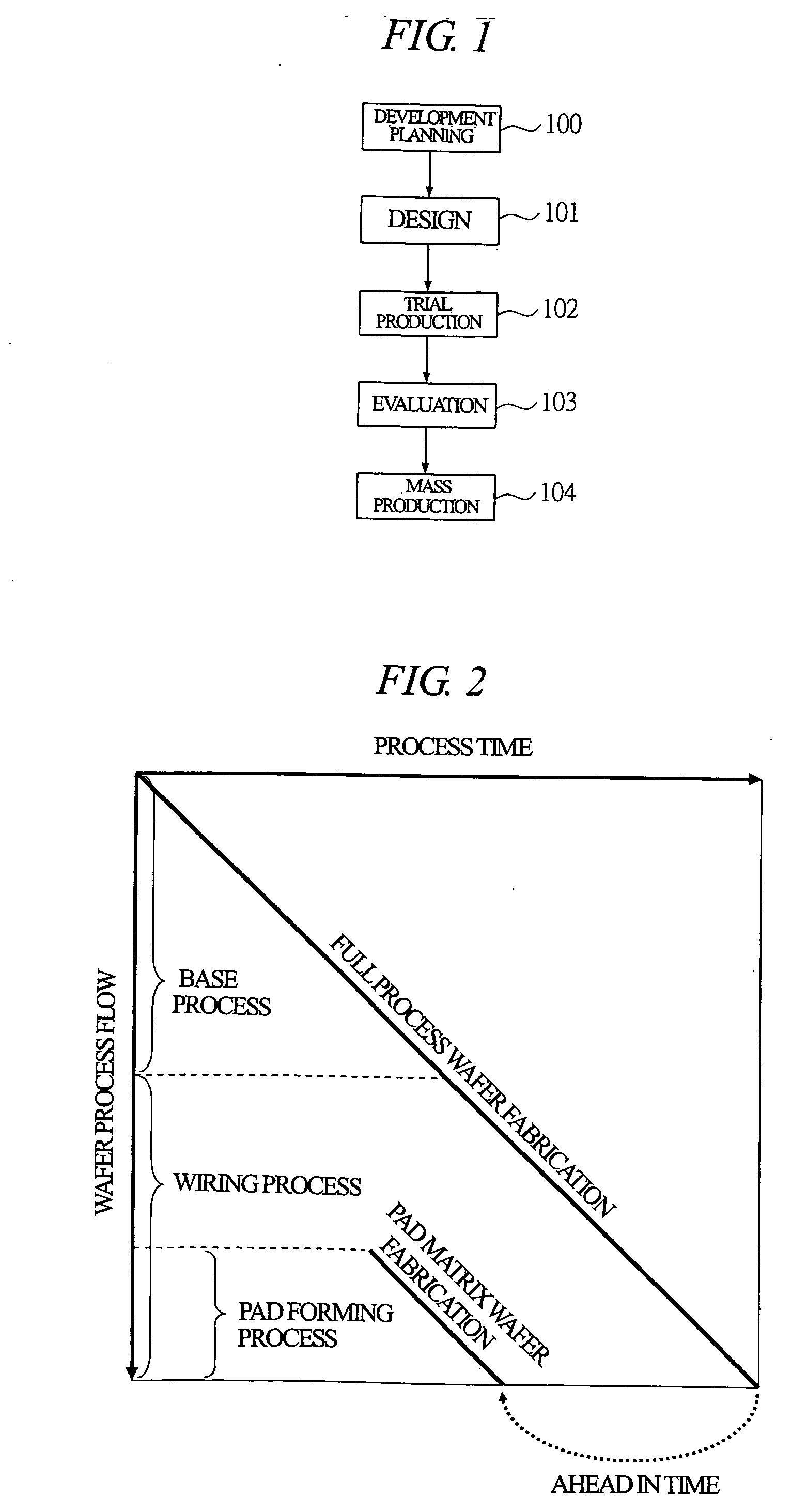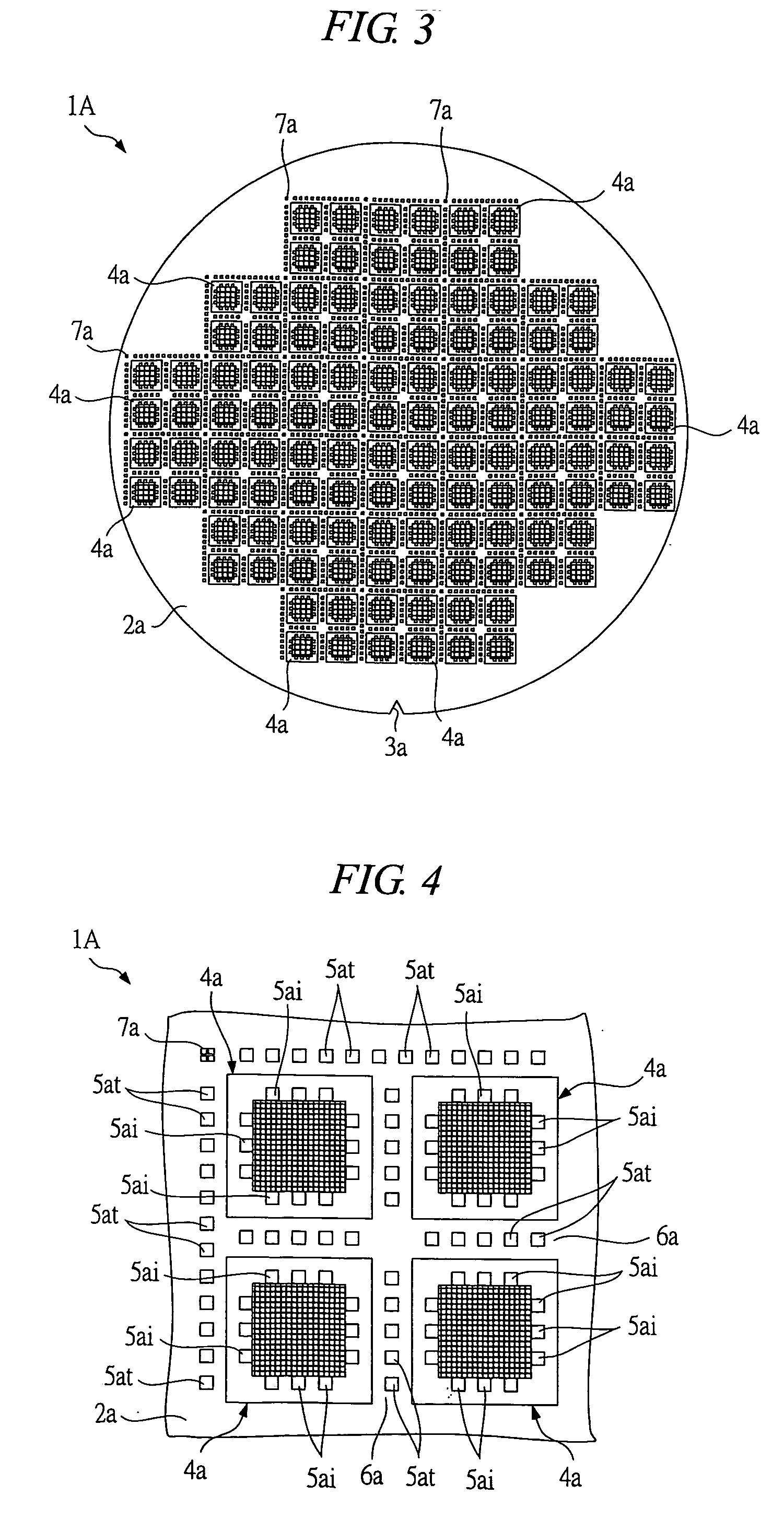Manufacturing method of semiconductor device
a manufacturing method and semiconductor technology, applied in the direction of individual semiconductor device testing, semiconductor/solid-state device testing/measurement, instruments, etc., can solve the problems of increasing the time required for setting various conditions and evaluations to be used in the wafer test and the post-process of the prototype wafer, and the time required for the initial prototype to be tested and the time required for the prototype to be tested has not been negligible, etc., and the effect of increasing the cost of the prototyp
- Summary
- Abstract
- Description
- Claims
- Application Information
AI Technical Summary
Benefits of technology
Problems solved by technology
Method used
Image
Examples
first embodiment
[0058]FIG. 1 shows a production flow chart of the semiconductor device according to a first embodiment.
[0059] First, this flow starts from a development planning 100 of products and moves to a design process 101. In the design process 101, a functional design, logical design, circuit design, device process design, and mask design for integrated circuit are performed in this order. In the functional design, logical design, and circuit design, a computer aided design (CAD) system is used to create data for product design, perform various verifications, and ensure and adjust the functions and performances based on simulation. In the device process design, experiments and data collection are repeated in consideration of a technical level for the mass production of the product (minimum dimensions, device structure, processes, manufacturing devices, production line and others) by using an element unit level and a small-scale Integrated circuit (IC) to determine the conditions. On the bas...
second embodiment
[0107] In a second embodiment, an example of the case where the product chip has a damascene interconnect structure will be described.
[0108]FIG. 35 illustrates a cross-sectional view of a main part of the chip 4a of the prototype wafer 1A. Since the planar configuration of the prototype wafer 1A in the second embodiment is the same as that in the first embodiment, the description thereof is omitted. Also, since the configuration of the product wafer in the second embodiment is the same as that of the prototype wafer 1A to be described in the second embodiment, the description thereof is omitted.
[0109] On the insulating layer 15a, a plurality of insulating layers 38 and 39 are alternately laminated. The insulating layer 38 is made of, for example, silicon nitride and the insulating layer 39 is made of, for example, silicon oxide. The insulating layer 39 can be formed of an insulating material with a dielectric constant lower than that of the silicon oxide. The insulating materials ...
third embodiment
[0113] In the third embodiment, an example of the application in the case where a product chip is manufactured by using a wafer process package (hereinafter referred to as WPP) technique will be described. The WPP technique includes a step of collectively performing a package process at once for a plurality of chips on the wafer formed through the wafer process before dicing the wafer.
[0114] First, an example of manufacturing process of the prototype in the WPP will be described with reference to FIGS. 37 to 41. FIGS. 37 to 41 are explanatory diagrams of manufacturing process of the prototype in the WPP. Since the method for manufacturing the product is the same as that of the prototype, the description thereof is omitted.
[0115]FIG. 37 is a general plan view showing an example of the prototype wafer 1A after the pre-process. In this example, a plurality of the pads 5ai are arranged along the longitudinal center line of each chip 4a on the main surface of the prototype wafer 1A (a ...
PUM
 Login to View More
Login to View More Abstract
Description
Claims
Application Information
 Login to View More
Login to View More - R&D
- Intellectual Property
- Life Sciences
- Materials
- Tech Scout
- Unparalleled Data Quality
- Higher Quality Content
- 60% Fewer Hallucinations
Browse by: Latest US Patents, China's latest patents, Technical Efficacy Thesaurus, Application Domain, Technology Topic, Popular Technical Reports.
© 2025 PatSnap. All rights reserved.Legal|Privacy policy|Modern Slavery Act Transparency Statement|Sitemap|About US| Contact US: help@patsnap.com



